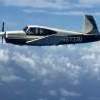Intermittent Rough Engine / High EGT need help diagnosing
-
Members Online
- W0VOS
- Bondo
- hubcap
- Jim Peace
- LANCECASPER
- Matt M
- buddy
- Neshi
- alextstone
- Skates97
- mariosmt
- McMooney
- MatthiasArnold
- GLJA
- M20S Driver
- Larry
- Texas Mooney
- Raistlin
- pilot7205g
- AndreiC
- mooneydemi
- 201Mooniac
- ZamF16
- Echo
- eman1200
- AH-1 Cobra Pilot
- 802flyer
- mike_elliott
- Ibra
- Oscar Avalle
- Mooneyintn
- Van Lanier
- Stanton R
- 0TreeLemur
- redbaron1982
- 7.Mooney.Driver.0


Recommended Posts
Join the conversation
You can post now and register later. If you have an account, sign in now to post with your account.